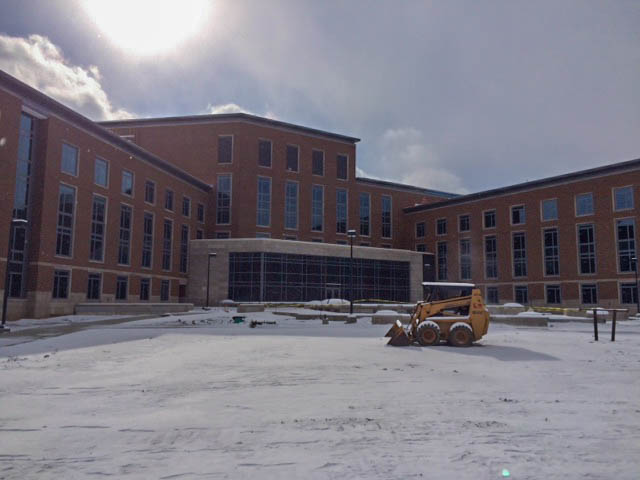
Indianapolis kicked off 2019 with a bitter, freezing winter vortex. Temperatures reached a record low, with the cold accentuated with a -40 degrees wind chill. While workers from other industries may only worry about being in the harsh elements as they walk to and from their heated office buildings, many construction workers are spending 8-10 hours a day in extreme conditions. Construction is already a hazardous job but adding intense weather temperatures only adds to the risks. Listed below are tips to keep you safe and warm this winter:
- Type of Clothing
- Wear an adequate amount of clothing to avoid frostbite or hypothermia. Too many layers can cause excess sweating, which can cause more harm than good. Keep in mind a warm balance when choosing work attire.
- Avoid cotton as it can soak up moisture from sweat and snow which can allow body heat to escape.
- The first layer of clothing should be a thin synthetic material, which offers the most protection in trapping body heat. Apply outer layers that are easily removable and waterproof.
- Footwear
- Double up on socks – first layer being a thin, breathable material. Add a second, thick layer like wool.
- Make sure boots have wiggle room inside them after layering up on socks. Poor circulation to the feet can cause other health issues.
- Waterproof boots with a removable sole are the best option for dealing with wet, wintery slush.
- Health Risks
- Depending on the temperature and wind chill, warm-up breaks should be taken frequently to avoid injuries, exhaustion, and other serious health risks.
- Avoid drinking caffeine and alcohol. These chemicals dehydrate the body and can make blood pressure rise. Drinking water throughout the day will keep the body hydrated and balanced. Even though it may be freezing outside, outdoor activities can still cause water loss from sweat.
- The body needs fuel to keep you warm. Be sure to snack often throughout the day. Proteins, carbs, and healthy fats will keep the body energized and working properly.
- Educating Awareness
- Train employees on how to spot cold stress symptoms such as hypothermia, frostbite, and trench foot is essential to any outdoor workplace.
- Implement the buddy system on the jobsite can alert a problem faster if someone is at risk of cold stress.
- Tools and equipment should be covered when not in use with an insulated cover. Gloves should always be worn while using them as well. This protects the life of tools and equipment and keeps hands from cold stress.
Regardless of the time spent outside, these tips can help prevent health problems that could be avoided. Extreme weather can be dangerous to work in but having the right knowledge and awareness can help keep everyone safe until Spring.
